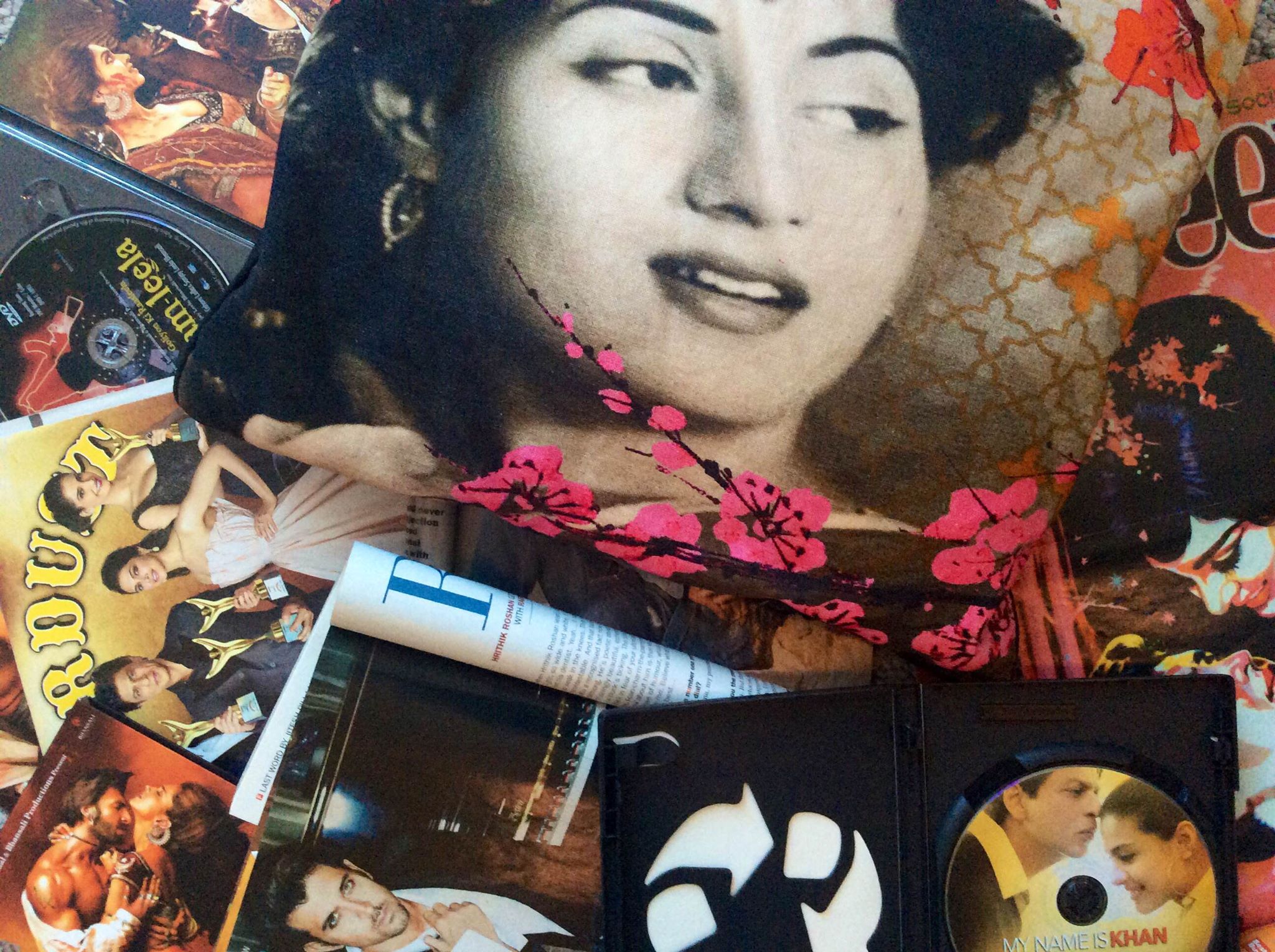On November 12th, 2015, the Huron County Museum will be showing the 2014 Hindi action-adventure movie Bang Bang for its Bollywood Movie Night. A remake of Hollywood’s Knight and Day, the Bollywood film follows the adventures of an unassuming bank employee (played by Katrina Kaif) after she meets a mysterious secret agent (Hrithik Roshan). Education & Programming Assistant Sinead Cox discusses how the the film’s plot utilizes the history of the famous Koh-I-Noor diamond.

Commemorative postcard: Queen Victoria’s 1897 diamond jubilee. Donated to the collected by Nancy Park. 2010.0027.001c
After the DVD finally arrived from Mumbai and I sat down to preview the hit Hindi action-adventure film Bang Bang, I fully expected the fun, brash Bollywood action romp suggested by title. What I wasn’t anticipating was a little bit of history to intrude on the action: the movie’s hero, Bollywood superstar Hrithik Roshan, makes his screen entrance triumphantly tossing the famous Koh-I-Noor diamond in the air after stealing it from the Tower of London.
The remarkably large Koh-I-Noor (“Mountain of Light”) was mined in India and belonged to a series of Indian rulers and conquerors, as well as nearby empires in Afghanistan and Persia, over several centuries. The British East India company seized the diamond with the rest of the Lahore treasury in 1849, after their annexation of Punjab; Governor-General Lord Dalhousie subsequently arranged for the gem’s owner, 10-year-old Sikh Maharaja Duleep Singh*, to ceremonially surrender the priceless diamond to Queen Victoria.
In 1851 the Koh-I-Noor was a much ballyhooed attraction at the Great Exhibition–its notoriety magnified by claims in the English press that the gem carried a curse. After its exhibition at the Crystal Palace, Prince Albert had the diamond recut to suit current European tastes, significantly reducing its size. The Koh-I-Noor, and its supposed curse were inspirations to author Wilkie Collins for his classic 1868 mystery novel The Moonstone, which–spoiler alert–ends with the titular moonstone recovered by agents and returned to its rightful place in an Indian temple. In real life, the Koh-I-Noor remains part of the British crown jewels, displayed for tourists at the Tower of London and worn by queens or queen consorts on ceremonial occasions.

Elizabeth, consort to George VI and mother of Elizabeth II, wore the Koh-I-Noor in her crown during her husband’s coronation. The crown, including the Koh-I-Noor, rested on the Queen Mother’s coffin during her 2002 funeral. This picture of Elizabeth in her coronation robes was donated to the collection by Rev. Harrison (crown not pictured). A971.0016.014
After its theft from the tower in the film’s prologue, the Koh-I-Noor emerges as Bang Bang’s plot ‘MacGuffin’: an excuse for bad guys to chase the movie’s couple so action, international adventure and romance can ensue. But because our leading lady, Katrina Kaif, is unsure of Roshan’s allegiances and motives throughout the movie, the Koh-I-Noor also serves to make him a little more sympathetic than would the theft of any anonymous gem. In the film’s exposition cutaways to news coverage of the Koh-I-Noor’s theft, the Indian public expresses joy and a desire for the famous diamond’s return to its homeland.
Many artefacts in the institutions of former imperial powers–from the ‘Elgin marbles’ to totem poles–still hold sacred or cultural significance in their countries of origin. On a much smaller scale, the Huron County Museum has de-accessioned artefacts and repatriated them to neighbouring county museums if they were created in, or had a more meaningful value to those communities. In the context of international diplomacy though, repatriation can often be a fraught & controversial topic. There are actually multiple countries with a claim to the Koh-I-Noor, since Lahore is now located within the borders of modern Pakistan.
During a trade visit to India in 2013, English Prime Minister David Cameron refused to consider the Koh-I-Noor’s repatriation to Punjab, declaring that he didn’t believe in ‘returnism’: “if you say yes to one you suddenly find the British Museum would be empty.” Cameron’s words succinctly capture why objects like the Koh-I-Noor remain potent symbols of deeper imperial legacies– of the exploitation of wealth and resources, and the collection of other cultures’ treasures for the edification of museum-goers.
I won’t spoil how the trajectory of the Koh-I-Noor’s theft ends in Bang Bang (you can see the finale for yourself in the museum theatre November 12th), but I ultimately found the twist resolution as strange and abrupt as was the diamond’s presence in this frivolous action film in the first place. The Koh-I-Noor’s starring role in the story speaks both to its continued notoriety, and the uneasy way it represents the colonial past and India’s present-day relationship with Britain. Of course, it’s also a pretty good excuse for shootouts and motorcycle chases.
*Duleep Singh, similarly to the diamond he owned, was exiled to England. The last Sikh Maharaja lived the life of an English gentleman with Queen Victoria’s favour, before unsuccessfully reviving his claims to his birthright later in life. Also like the Koh-I-Noor, there remains some contention about his final resting place being England, rather than Punjab.
Further Reading
For more about the Koh-I-Noor in the Great Exhibition see “Koh-i-Noor: Empire, Diamonds, and the Performance of British Material Culture,” by Danielle C. Kinsey, Journal of British Studies Vol. 48, No. 2, Special Issue on Material Culture (Apr., 2009), pp. 391-419 [available via Jstor].
The Huron County Museum’s first-ever Bollywood Movie Night happens Nov. 12th, 2015. Sweets, snacks and hot chai are available from 4 pm, with henna art offered by local artist David Godkine. The movie starts at 6:15 pm in the museum theatre.

